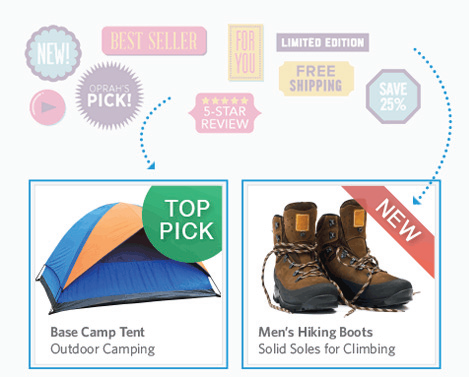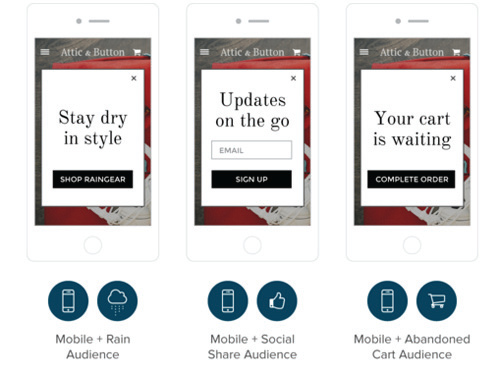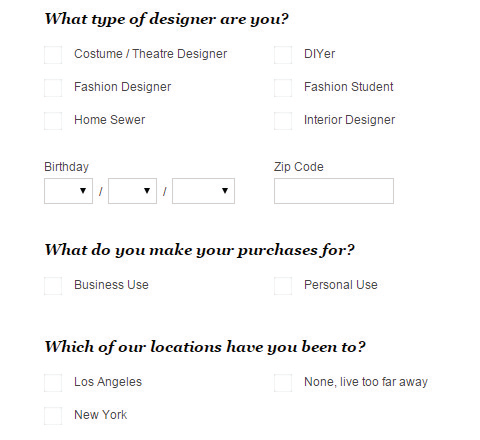Personalization Factors & Functions to Consider

By Amberly Dressler, Managing Editor
Batch and blast, spray and pray, one-size-fits-all.
These are all marketing phrases of the past and today's digital businesses would be wise to forget these approaches ever existed. Not only are modern consumers expecting companies to know who they are, what they've bought in the past and what they may like now and in the future, but the technologies used to provide such deep insight are also more accessible than many retailers realize. Further, customers are willing to provide companies personal data - in some cases sacrificing anonymity and privacy - to get a better shopping experience. What's the brand payoff?
According to Adobe, one of its partners (a popular travel site) reported seeing a 62 percent increase in bookings among existing members by simply personalizing banner content when they returned to the site. With the benefits of providing a personalized online experience so clear, it's time to look at factors and functions that will make quick work of providing more one-on-one content to consumers.
Product Call Outs
Ecommerce category pages and on-site search results can be bothersome to navigate when they are slow to load, irrelevant to a person's intent, lack rich product details or images and the list goes on. Product badges - essentially labels on different SKUs - have long been used to call attention to a certain product on crowded pages, but many times these labels are for retailers to accomplish their goals, not for consumers to complete theirs. For instance, a retailer will "badge" a product with an "exclusive deal"¬ù or "new"¬ù label if they are trying to move inventory.
With Monetate for Merchandising, ecommerce merchants can display badges according to dynamic factors related to the actual shopper like his or her location (and that location's weather), user affinities (e.g. past purchases) and more. By badging a product with "save 25 percent"¬ù that complements a previously purchased product, retailers have the opportunity to increase conversions while a "for you"¬ù badge could increase sales as well as basket sizes.

A. One functionality of Monetate for Merchandising is the personalization of product badges to call out certain products based on a user's location or affinities.
What's even more notable about the functionality from Monetate is that merchants can test badge attributes (e.g. color, copy, placement) and the winning design will be served to increase the effectiveness even more. This is one example of sophisticated, yet accessible personalization functionality for retailers to consider, but it's not the only one.
Targeted Content
When it comes to personalizing shoppers' experiences, often it's not about finding the right technology to use but rather what approval needs to be gained to purchase it, how it will work with products currently in use and to whom the functionality will be assigned. The same could be said of testing website elements and Optimizely has been a leader in that field for years for its ability to reduce some of the internal barriers companies have for providing a more optimized experience.
Optimizely's Personalization offering works similarly in that retailers don't need a large team of analysts or developers to serve content based on what is known about the shopper. Examples of personalization offered by Optimizely are to show new shoe styles to visitors who previously browsed shoes or show jackets and sweaters to visitors in cold-weather locations. With no developers needed, Optimizely Personalization users can identify interesting behaviors (e.g. via browsing session data) and connect it to other first-party data, as well as third-party data (like demographics), to get a more complete picture of a customer, which can be used to serve personalized experiences - such as if a person is accessing the site on a mobile device and it's raining where they are or they're on their mobile device and have items left in their shopping cart (see Image B).

B. Optimizely Personalization gives retailers the ability to send personalized content in real-time based on what is known about the shopper.
While both shoppers are on their mobile devices, they have different expectations and needs for their website visit and should be catered to accordingly. Not all customer segments, however, are created equal.
Optimizely Personalization can actually predict which visitor experiences are worth personalizing. Using predictive analytics and machine learning, Optimizely will reveal high-value audiences, under- and over-performing segments and other targeting opportunities that are worth a retailer's resources. Without leveraging internal and external data, however, retailers will need to rely on current or prospective customers to self-report.
EMAIL SIGN-UP
Email marketing remains one of the top traffic sources and retailers should not overlook the value it brings in the form of site visits, conversions and return on investment, as well as the vast segmentation possibilities. While emails can be driven by customer behaviors (e.g. last opens, recent purchases, etc.), it's important to understand a recipient's needs from the onset. For instance, Mood Fabrics (featured on the show "Project Runway"¬ù) asks identifying questions on its email sign-up form.

C. Using Listrak, Mood Fabrics asks subscribers to self-report information, which is used for recurring, automated personalized email campaigns.
While this does make for a lengthier form (some would argue it's against best practices as subscribers may leave), Mood is able to segment its audience and deliver content that is relevant to recipients, as a "costume/theatre designer"¬ù requires different content than a "home sewer." Mood then uses this information to send highly personalized, recurring, automated campaigns based on what segment the person falls in: what they have purchased recently and what are the top sellers and what is trending for that group.
Using Listrak, Mood reports these three recurring automated campaigns account for 5 percent of all online sales, and experience higher average order values and higher conversion rates than their other email campaigns.
With just a little bit of self-reporting, as well as the ability to leverage that data and data it has collected on its own, Mood is able to personalize email campaigns for the benefit of its bottom line.
Fun Factors & Functions
With so many personalization tools on the market - many of which come with a very affordable pricetag - few excuses remain to not start personalizing retail websites and the content delivered on a brand's behalf.
By having a little fun with who is segmented and why, retailers can begin to reap the rewards of speaking to consumers more personally as shoppers will return the favor with more purchases and greater loyalty.

Subscribe to Our Newsletter!
Latest in Marketing









